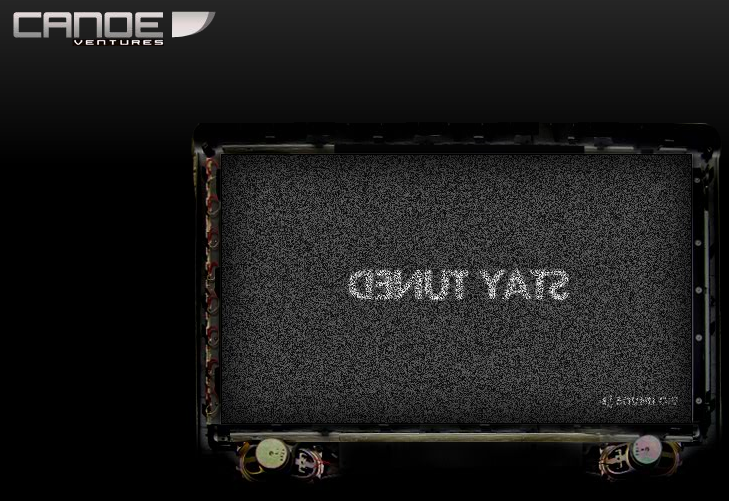Rowing Cable’s Canoe: An ‘Ecological Play’

WASHINGTON, D.C. -- Cable operators are regional. They want to bring in national ad dollars. And they want to take ad dollars back from targeted ad-sellers online (like market leader Google).
So the six biggest players – Comcast, Time Warner Cable, Charter, Cox, Cablevision and Bright House – have gotten into one advanced advertising boat, called Canoe Ventures. They are trying to row toward the goal of delivering national coverage to advertisers in one fell swoop and targeted advertising, down to the local zone and eventually individual household, at the same time.
This venture a year ago was called “small” and “primitive.” This year, at the 2009 Cable Show, it’s being called “slow” and “quiet.”
What it really is is an “ecological play.” On two levels.
The term comes from David Verklin, Canoe’s chief executive, who used it this morning on the stage of the show, in an opening keynote discussion that included such industry luminaries as Comcast COO Steve Burke, Time Warner Cable COO Landel Hobbs and Discovery Communications CEO David Zaslave.
What he was describing, first, was the opportunity for electronic delivery of mass, but targeted advertising. Citibank, he said, spent $300 million a year sending out direct mail pieces trying to get Americans to sign up for credit cards. Each piece of mail costs 75 cents, in his estimate – and 95% get tossed away.
Thus, delivering these same messages via cable could be an “ecological play,’’ saving tons of trees.
But it’s an “ecological play” in another, larger sense. Cable is a thriving medium because it draws strength from two revenue streams: subscriptions and advertising. Broadcast TV only has advertising. Newspapers are losing subscriptions as they move online. Music (pretty much) has neither.
Canoe is designed to keep that second leg – advertising – healthy, as online competition heats up. What it wants to tell advertisers, sooner rather than later, is that it can give them reach (the ability to reach as many people as they want) and specificity (hitting only those customers that are good targets for your message).
They want to take share back from online.
To that end, Verklin is promising, after eight months on the job, that Canoe will be able to deliver on the basics of its promise about six weeks from now.
That’s when the operators, working with two cable programming networks (as yet unsigned and unnamed), will:
--Deliver the first national advertising insertion on their combined systems, ever --Demonstrate the availability of a complete, ready-to-use local infrastructure, on a national basis. --Deliver the first ad that also has a “demographic slice” or targeted component to it.
The example Verklin again used was credit cards. American Express could promote its green card and gold card to all 60 million households served by these six operators. Forty-two million of the households would get a commercial for the green card – but the 18 million households in geographic zones with an average of more than $100,000 in annual income would get a gold card pitch.
Fine and well and good. But the industry may not be quite ready to eat its own dog food. David Levy, president of Turner Broadcasting Sales, declared that the data being delivered by Canoe at this point is too generic. An advertiser can’t tell which households have dogs – so an ad can’t be effectively targeted for dog food.
“That’s not what’s in the information pack right now,’’ said Levy.
Over time, though, the cable operators should be able to compile huge mounds of very specific information on every household served. It can, of course, survey its customers online to figure out who owns a cat, dog, parakeet or ferret.
And each operator very conceivably could capture more click data about each home in their terriotories than Google. Every click of the TV remote control, from changing channels to playing back specific DVR titles to requests for information, already is, can or will be logged through tens of millions of set-top boxes. And, don’t forget, there’s the computer keyboard, as well. Cable operators are part of a duopoly across this country in supplying broadband service. Don’t be surprised if the level of capturing of those keystrokes gets ratcheted up. Even if anonymized.
Verklin says the firms are not “trying to throw a grenade into the television business,’’ by replacing Nielsen and its 17,000 People Meters with data from 40 or 50 million set-top boxes (although he was quick to point out the comparative scale).
But what they do want to do is “give the Internet a run for its money.”
And keep advertisers, as well as subscribers, paying to play on its turf.
Otherwise, with the advance of not just targeted online advertising but free online video, the two-revenue-stream ecosystem carefully created by cable operators, their programmers and their equipment and service providers will -- in the long run -- be at risk.
